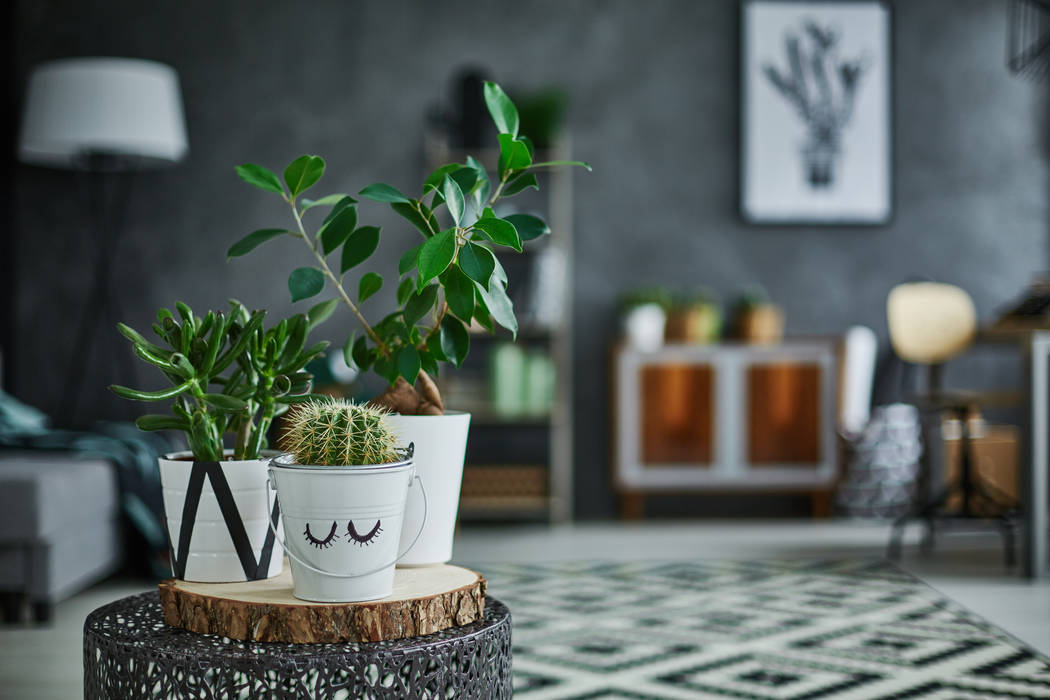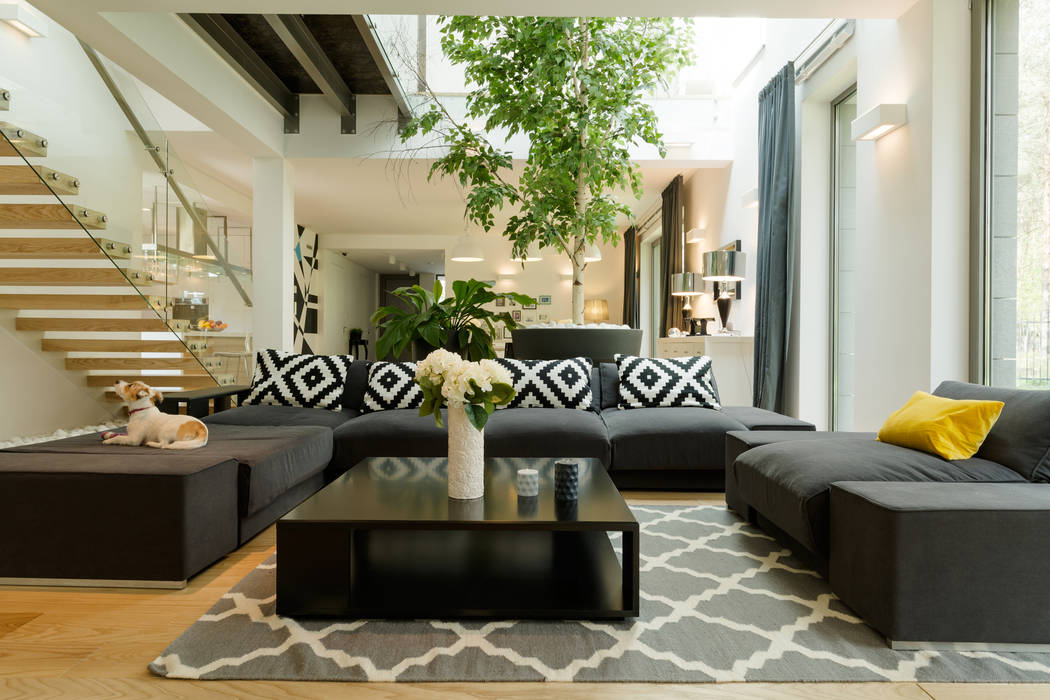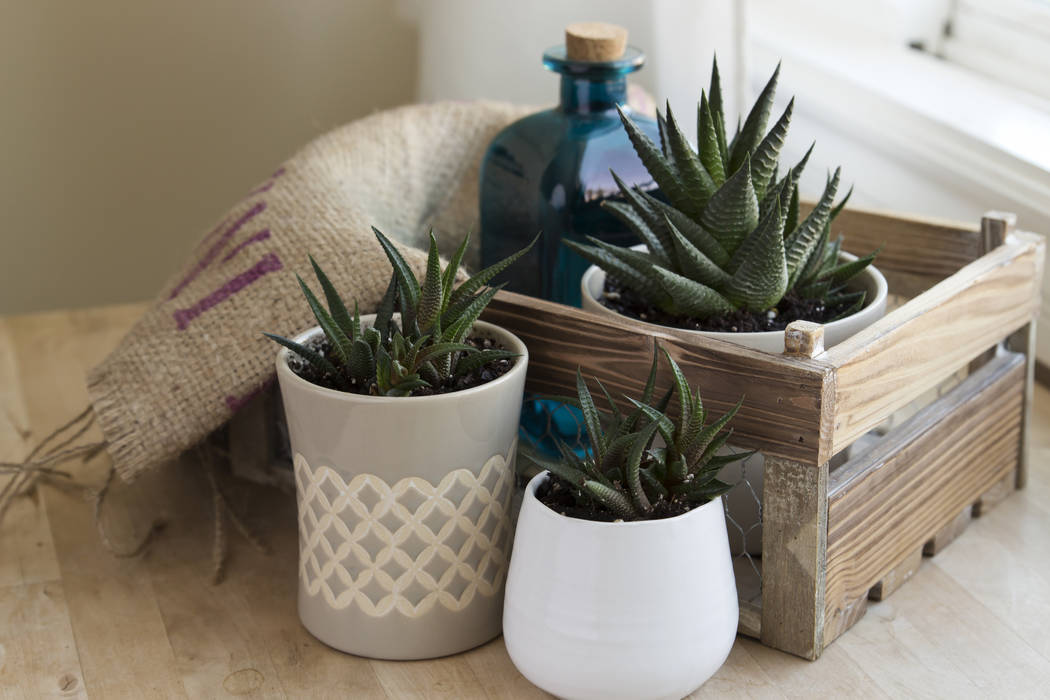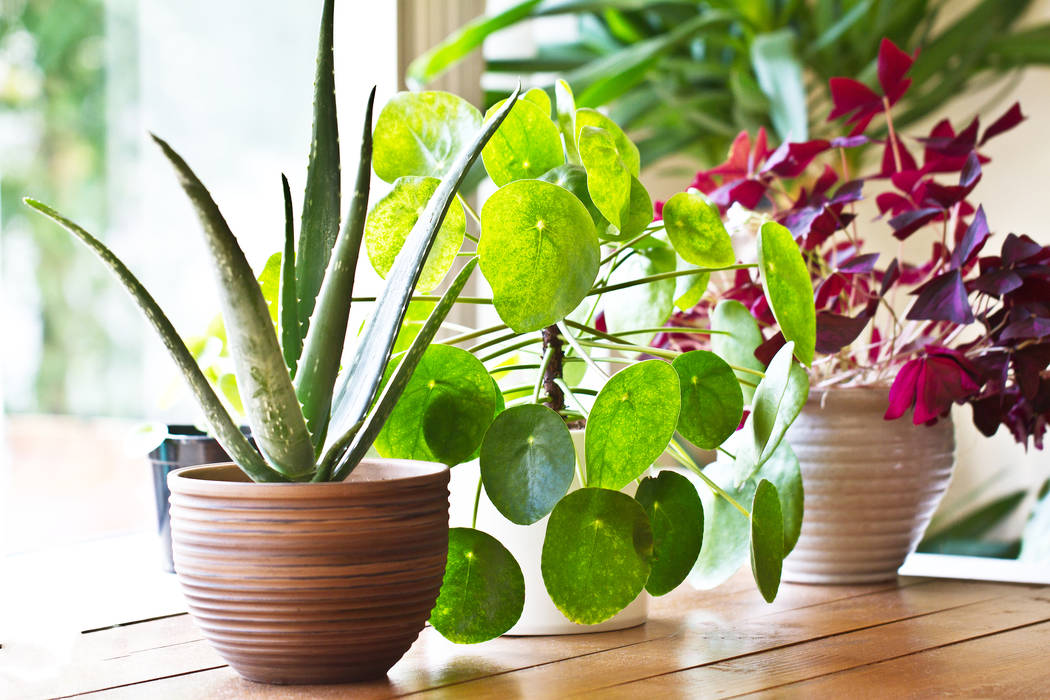Houseplants need bright, indirect light and light watering
The weather is warmer, the days are longer, and thoughts turn to all the plants in the front or backyard that need care and attention after the long winter. But depending on your green thumb, maybe those thoughts should turn to indoor houseplants.
Start with the letter A (aluminum plant) and go all the way to Z (zebra plant) and discover that there is a least one houseplant for every letter of the alphabet. Which one is best for your home may depend on the capability of your green thumb. No green thumb? Think snake plant, a succulent plant that tolerates neglect, withstands low light and is nearly indestructible.
Brandi Eide, botanical garden supervisor at Springs Preserve, knows the difference between indoor and outdoor plants.
“Indoor plants are generally in containers so their root systems are restricted,” she said. “Container plants often need to be repotted into a larger container and when you do this, be sure to add fresh soil which supplies nutrients.
“Most indoor plants are not finicky, but do need bright, indirect light and need to be kept moist but not soggy. Now when I say a bright location, I don’t mean the plant has to face south or west since intense sunlight can actually burn them.”
According to Eide, there are some indoor plants that are better suited for Las Vegas.
“Many plants are well-suited to live indoors in our dry, yet temperature-conditioned climate,” she said. “Common houseplants are tolerant of lower humidity, as long as they’re kept watered.
“However, a few that are far more challenging to keep alive are some palms, most ferns, mosses and carnivorous plants. They require a decent amount of humidity to keep them looking good. Humidity domes or other tricks, like using a tray of pebbles filled with water under or around these plants, can sometimes help. Some plants don’t respond well to drastic temperature shifts or drafty conditions, but with adequate light, proper moisture levels and managing soil/fertilization needs, most plants can be grown nearly anywhere.”
Some of the more popular houseplants are succulents. They are water-retaining plants that adapt to harsh dry environments, are easy to care for and available in a variety of shapes, colors, and sizes.
“If you’re growing succulents indoors, most require more light and far less water than leafy houseplants,” Eide said. “Too little light can cause them to stretch out and lose their lovely forms. Too much water can rot them. It’s better to err on the side of too dry than too wet when growing succulents.”
Watering seems to be a major issue with both indoor and outdoor plants. While many leafy houseplants show signs of downturned leaves and a weeping look when in need of water, succulents develop a shriveled, desiccated look.
“Yellow, floppy leaves are often an indicator they’ve been receiving too much water,” Eide said. “Succulents don’t give a warning when overwatered; they’ll just turn to mush. It’s critical that any container has proper drainage. Many decorative pots have a solid base, so use a smaller pot inside these containers so they can be removed during watering. This allows water to run through the soil.”
Eide warns that Southern Nevada water has a high salt content, as do synthetic fertilizers.
“It’s easy to have salt buildup if plants are not routinely being flushed through when watered,” she said. “It’s difficult to determine adequate watering in pots when there is no drainage. Excess water will remain in the bottom causing soggy conditions, root rot, smelly conditions and a failing plant.”
There is a common myth that adding a layer of rock or gravel to the bottom layer of a container will improve drainage. It won’t. Instead, it just decreases the amount of space the roots can grow by reducing the volume of soil. Eide suggests covering the pot’s drainage holes with a napkin, tissue or single layer of newspaper to keep the soil from spilling from the base until it settles.
Favorite houseplants
With so many houseplants on the market, which are the best? Here are a few:
■ Tillandsias, commonly referred to as air plants, do not require roots to grow. All the nutrients and moisture are absorbed through the foliage.
■ Chinese evergreen has great foliage. Its leaves are punctuated with shades of silver, gray or green. It is an attractive choice to brighten low-light areas of the home.
■ Peperomia is a diverse group of small houseplants with waxy and often highly textured leaves. Red-edge peperomia has a narrow band of red surrounding a creamy leaf margin that adds a splash of color in any room.
■ Fiddle leaf fig is a beautiful tree that gets its common name from the violin-shape outline of its large, deep green leaves. It tolerates low light, though it may lose its lower leaves in dim spots.
■ Schefflera is often called umbrella tree because of its umbrellalike foliage. It is tolerant of low humidity. Give it a quarter turn in front of the window every week to expose all sides to indirect sunlight.
■ Spider plants have slender, arching leaves with creamy white and green stripes and a trailing habit that make it ideal for a hanging basket. Its spidery appearance comes from the small plantlets that grow on the ends of narrow, wiry stems called runners.































